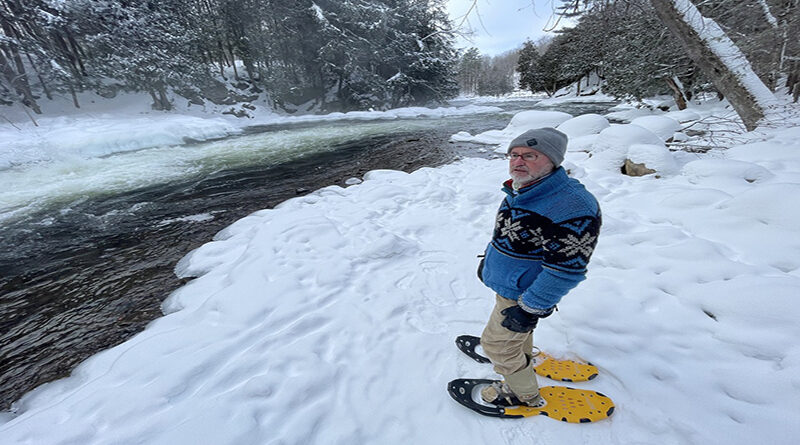Remember Your Woollies
I recommend you become a tag reader. Clothing tags tell you what materials were used to make the garment. When deciding on your purchase, knowledge of clothing fabrics and their properties will help you keep warm and dry in your active outdoor pursuits.
The fundamental clothing concept to staying warm in cold temperatures is layering; each clothing layer traps some of the warm air that radiates from your body. However, picking the best combination of fabrics to stay dry starts with the base layer, the clothing in direct contact with your skin.
Moisture is your enemy, especially in the winter. The popular mantra amongst outdoors folk is that “cotton kills” as wet cotton base layers can be hazardous in the cold. When active outdoors, cotton is hydrophilic or “water loving” and will absorb moisture from your sweat or precipitation. All the spaces in cotton fill with moisture, not effectively wicking moisture away from your skin. This can leave you with that uncomfortable cold and clammy feeling as wet cotton loses all its insulating value and draws heat away from your body. Fine in the summer when you are hot, not good in the winter.
Materials that are hydrophobic, or “water-fearing” are commonly synthetic materials like polypropylene and polyester. The best base layers have hydrophilic (water-loving) properties against your skin and hydrophobic (water-hating) properties on the outside of the material thereby creating a wicking action keeping your skin dry. Wool, especially merino wool, does this naturally as the exterior fibres of wool are hydrophobic and the interbior wool fibres are hydrophilic.
Unlike the “woollies” of the past, merino wool worn directly against your skin is no longer like wearing burlap. The ultrafine diameter of merino wool is much softer on your skin. Traditional course wool fibers come from sheep that graze in the low-lying grassy plains. Merino sheep live in mountainous regions where harsher conditions and extreme temperature variances produce wool that is finely crimped and effective for thermoregulation in all seasons.
Although not as hydrophobic as poly-based materials, wool fibers are hollow, so the clothing is 85% air. These pockets of air trap body heat within the fibres, a characteristic of the best cold weather clothing. Wool does absorb up to 35% of its weight in water, however, it does not leave you feeling damp and can keep you warm even when wet. Excessive sweat or precipitation that seeps into the hollow wool fibers does not ensure a cold experience like with cotton clothing.
Wool is also anti-bacterial as it has lanolin in it. Lanolin is a natural, oily, or waxy substance that allows wool to effectively wick moisture, stay soft and suppress odour. Body odours are absorbed by poly-type material will leave your next day base layers smelling like last week’s hockey bag.
Keep in mind that the best clothing can’t do everything for you, so as you start to sweat, shed a layer or reduce your activity level before your base layer gets too wet. If you sense it is going to rain or snow, put on a nylon shell before you get wet. Always bring an extra set of clothing with you on your outdoor trips in case the weather changes or something unexpected happens. Packing a waterproof stuff sack with a wicking, base layer, an insulating layer (fleece or wool) or a windbreaker (uncoated nylon or breathable shell) is a wise precaution.
So, on your next clothing purchase, check the tag, you might just find the ideal piece of clothing to keep you warm, dry and happy while actively enjoying the outdoors in all seasons.
Submitted by Rick Whitteker. You can find Rick at home in the forest, as a seasoned trail guide, nature writer and passionate wildlife enthusiast in the Haliburton Highlands.
Photo Credit: The Highlander Staff Reporter




